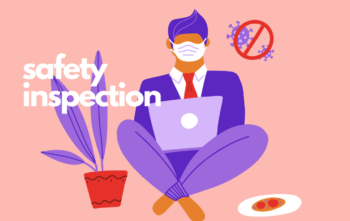We often talk about developing procedures as a means to help improve efficiency, empower staff, and create a business you can duplicate or sell. But there is a type of procedure that every business should have, and have down pat, without exception or exclusion: Emergency Response Procedures.
Any business that has responsibility for others’ safety – whether it’s the safety of staff in the office and on site, the patients of a medical practice, or the customers of a chemical manufacturer – will need to have well-practiced procedures in place for dealing with emergency events.
A good example would be what to do in the event of a fire. As well as having a procedure for this eventuality, you’ll no doubt have at least one practice drill each year to make sure all your staff know what to do should the real thing occur.
But like any other procedure in your business, its value lies in everyone’s ability to implement it quickly and effectively when the need arises. Your day-to-day procedures will no doubt be well practiced, but your staff need to be as confident in the rarely (and hopefully never) needed situations when things go badly wrong.
One example of too-slow decision-making and poor intra-team communication recently cost a little boy his life.
A Fatal Flight
In January, the New Zealand Herald published the story of how a nine-year-old boy suffered a severe asthma attack 30 minutes into a flight from Auckland to Samoa. While the boy’s family lauded the flight attendants’ response, the pilot’s decision-making has been called into question. A full 60 minutes after the boy’s attack started — that’s 90 minutes into the flight — the pilot told the family it was too late for the flight to turn back. By the time they arrived in Samoa, the boy had died.
The Herald article cited comments from experts of how in-flight medical events were common, particularly with long-haul flights, and that a return to Auckland or diversion to another destination should have been achievable. While they add that each airline’s emergency response protocols will be different, the boy’s family is calling on the carrier to reveal its own procedures, and review and improve them so such an event would not happen again.
It’s a harrowing tale, and one that will change the lives of many forever.
Be Prepared
Many of us learned this motto at Scouts when we were children, and it’s no less relevant to us now as adults. The level of responsibility you have for the well-being of others will depend on your industry and your profession within it. A business should be able to assess the risks to its own well-being as well as the people it comes in contact with, and have good management plans to address them.
This includes developing emergency response procedures, making sure staff are aware of them, and practicing them so that everyone knows what to do should the worst happen. When you’re well prepared, you’ll be able to minimize the damage of a critical event — including reducing the incidence of injury and death. Responding calmly and competently in such events will also uphold your business’ reputation, demonstrating your commitment and capability in bad times, as well as good.
How Do Your Emergency Response Procedures Look?
If you need help developing, reviewing or revising your current emergency response procedures, simply email your Way We Do experts at support@waywedo.com and we’ll get you on track.
•••
If this story has affected you, we encourage you to talk about it
with a trusted friend or counselor.





